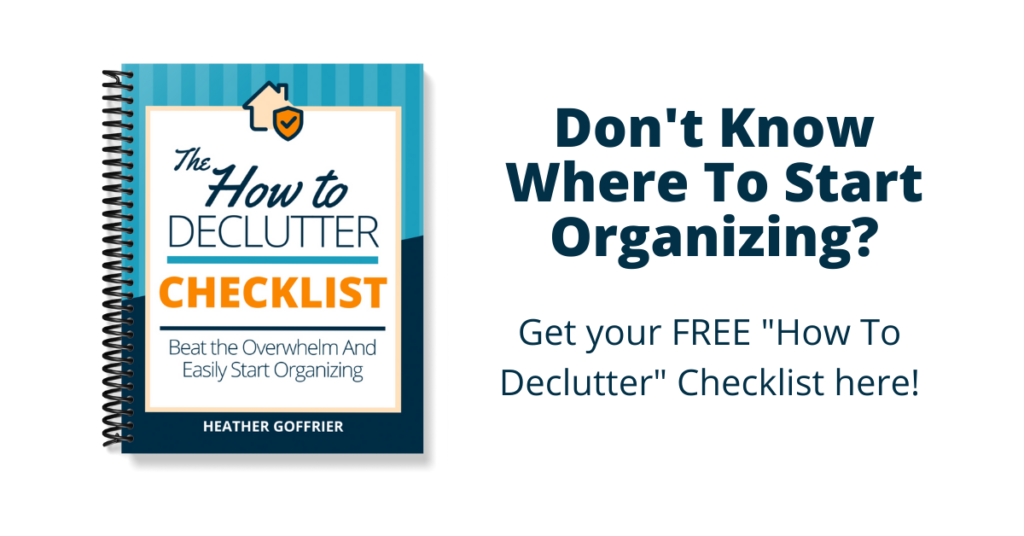Don’t miss these baby care basics for your medicine cabinet. You’ll avoid late-night runs to the pharmacy and eliminate a ton of stress when your kids are sick! Plus, get a free guide, “How to Start An Infant Sleep Schedule” to help reduce late nights up with baby. Click this button to download:
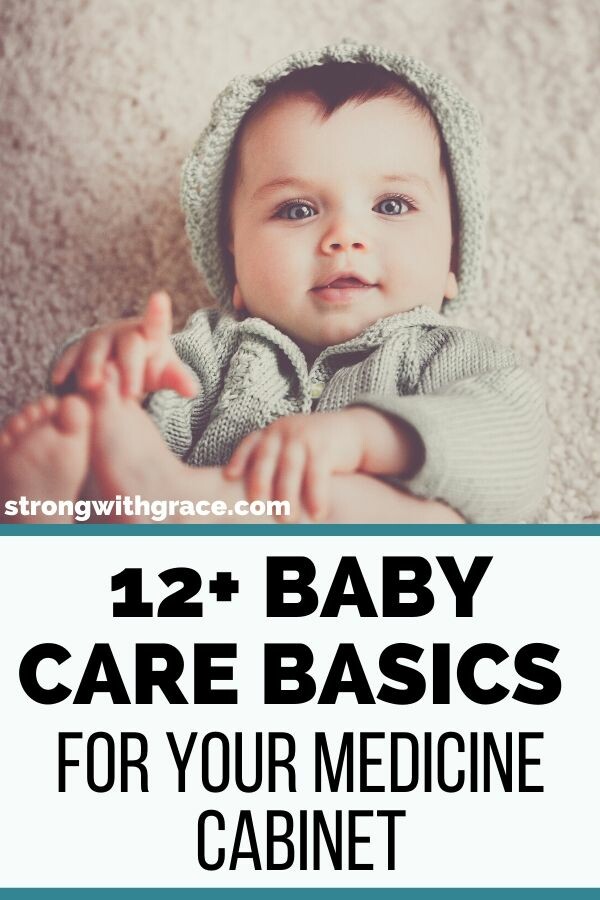
We hope you enjoy the products we recommend! This post may contain affiliate links. That means we get a portion of the commission if you click through and make a purchase, but you don’t pay a cent more. Thank you for supporting our small business as we strive to help you rock mom life!
My two youngest recently had Hand Foot & Mouth disease, and we are finally out of recover-mode over here.
Why is it always AFTER the kids get sick that I realize, “Oh, it would have been really nice if I’d thought to stock my medicine cabinet with some gauze and cloth tape.”
You know, the tape I haven’t seen it since I was 4 when I shredded my knee from a curb vs. bike collision?
It’s no fun to make late-night runs to Walgreens or not have anything to use to bandage a very sad, feverish child with terrible rashes all over her hands and feet.
Seriously heartbreaking!
RELATED: BABY NEVER SLEEPS? YOU MIGHT BE MISSING THESE 15 NEWBORN SLEEP CUES
Table of Contents
The Most Important Baby Care Basics To Stock For First Aid
After digging through my kids’ medicine tub this past week and find it lacking, I thought I’d share my list of the most important baby care basics for first aid (with gauze and cloth tape now included).
Here are my top recommendations:
Gauze Rolls & Cloth Tape
Hand Food & Mouth (HFM) showed up differently for my two youngest. Both had a fever but the 2 year old had bright red rashes all over her feet, which turned into tons of tiny seeping blisters.
She already has exzema, which the dr said tends to make HFM worse. Poor little one. I made the mistake of putting socks on over the Aquaphor I used, but the socks stuck to her blisters and pulled the skin away when I took them off.
I felt so bad!
After that hubby trucked off to the drug store for gauze and tape, plus refils on tylenol and motrin.
From then on, I put cream on, then gauze with cloth tape to secure it. After that went the socks. I also was sure to run the gauze and her feet under warm water before changing the bandages.
My oldest had the rash all over her legs, and up on her arms. Her rash wasn’t as bad but it seemed to last longer and bother her more.
Pain Medicine
Since the main treatment for HFM is pain management and caring for the rashes, we made sure to have Tylenol and Motrin on hand and alternate them.
We keep these on hand anyway, because with three kids we never know when one might run into the room and suddenly have a 103 fever, when they were just fine a second ago.
That’s what happened with my youngest and HFM.
We were about to go get haircuts and she started acting tired and droopy, sucking her thumb and wanting to cuddle. When I picked her up she was on fire with fever. Where did that come from?
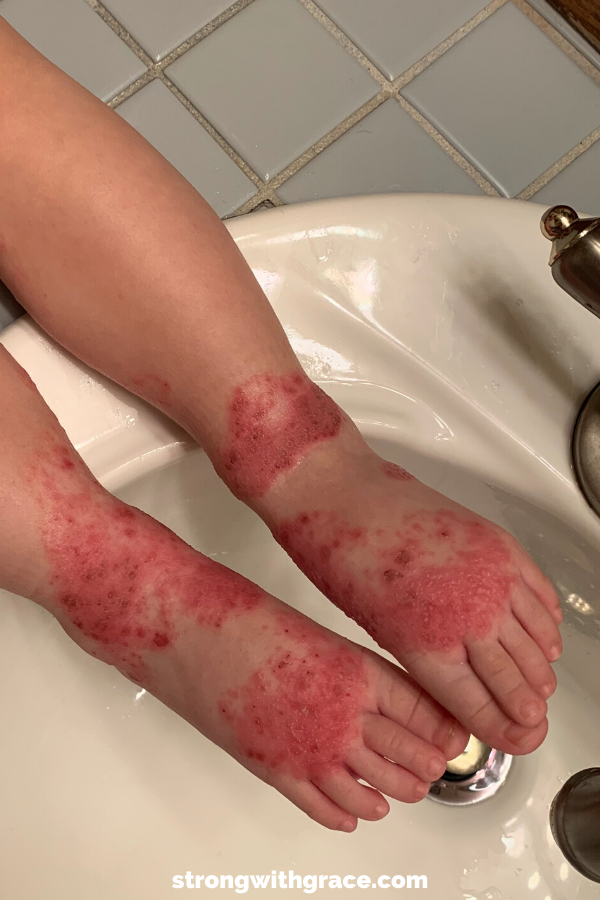
Liquid Claritin or Benedryl
I like to keep an allergy medicine on hand in case of a random rash or allergic reaction.
These are age-restrictive but some doctors will suggest a small dose for younger kids. Don’t take my word on it and be sure to check in with your provider before administering anything.
By the way, the rashes with HFM didn’t look like an allergic reaction so I didn’t start with giving this med.
Instead, I called the nurse hotline and got my daughter into the doctor that day. They had us sneak in the Secret-Santa entrance for people with contagious diseases.
RELATED: 21 INSPIRATIONAL FIRST TIME MOM QUOTES
Gripe water
I like natural treatments, and gripe water has worked well for our kiddos when they had tummy issues, especially when they were too little to tell us what was going on and we were just guessing.
Saline spray
Another must-have for colds. If you want any sleep at night, keep Little Remedies saline spray around to help your child breathe better and keep their nose clear.
Sucking Thing or the Squeeze Bulb
Ok the “sucking thing” is really called a Nose Frida. I never got one but I’ve heard other moms swear by these things. They suck the snot out of your kids sinuses by sucking on a straw-like tube.
Yes, YOU get to suck on the straw.
Apparently there’s a stopper so no snot ever gets into your mouth. Sounds gross but I can see the perks.
I always stuck with the squeeze bulb they sent home from the hospital, but the Nose Frida is worth a shot if you’re just starting out.
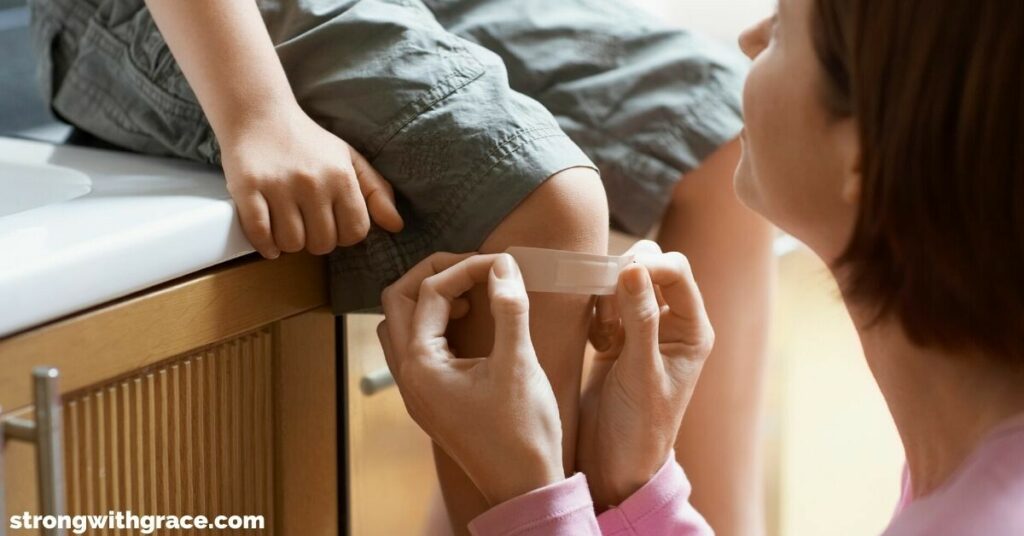
Bandaids
Bandaids are first aid kid 101, and it’s not fun to be out of them when your child is screaming over a small scrape. Buy a box (or three) to stock up, believe me.
First aid cream
I use a cream with silver in it, or plain ol’ Neosporin.
Tweezers
Easy to overlook, but it’s hard to get splinters out without one of these.
Heating/Ice pack
We use a frozen piggy or frozen rice blob animal (seriously have no idea what animal it is) for any bumps or bonks. They leave ice on for about 7 seconds. But it’s enough for them to feel like they’re getting treatment and attention.
Natural remedies
We love Hylands brand including cough & cold and their cold tabs that dissolve.
Storage Tub
Throw it all together into a storage tub and keep it out of reach of small curious hands.
Kids don’t need a spoonful of sugar to help the medicine go down these days. The liquid already tastes like candy.
So be sure to keep it locked up or high up on a shelf.
Final Thoughts On Baby Care Basics
If you’re prepared, you won’t have to scramble when you’re hit with Hand Food and Mouth (heaven forbid). You’ll be stocked up and avoid late-night runs to Walgreens when you really just want to be in bed.
I seriously hope none of your kids ever get Hand Foot & Mouth.
It’s awful!
It’s typically seen in kids 5 and under, but older kids and adults can get it. My husband, our oldest daughter and I seemed to have escaped it thankfully. I hope you do too!
- What else do you put in your medicine cabinet?
Let me know!
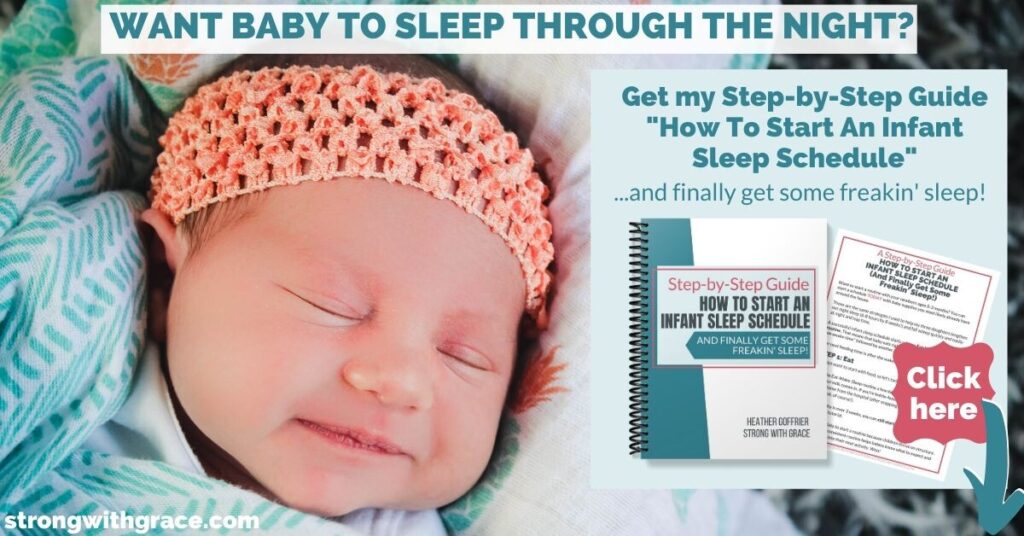
If you could use more sleep or are desperately waiting for your little one to sleep through the night, don’t miss my free guide, “How To Start An Infant Sleep Schedule.” It’s a life-saver! Click this button to download:

